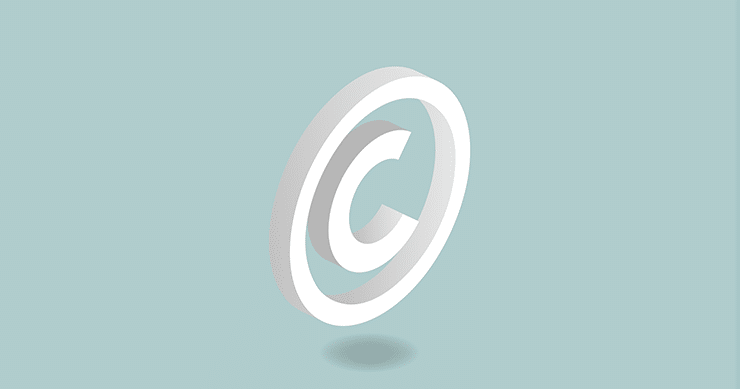What Are Digital Rights?
Digital Rights refer to the permissions and restrictions associated with using digital content, such as text, images, audio, video, and software. These rights are often tied to the intellectual property and ownership of the content and govern how users can use the digital materials.

Digital Rights Include:
- Access rights dictate who can access the digital content, with authorized access specifying the individuals granted permission and access levels defining the extent of their interaction, whether viewing, listening, editing, or other actions.
- Usage rights involve copying permissions, determining whether users can duplicate the digital content, distribution rights specifying how the content can be shared, and modification rights determining if alterations are allowed.
- Time-based rights introduce elements such as expiration, setting a time limit for content access, and rental periods, applicable in digital rental scenarios, defining the duration of authorized use.
- Geographic restrictions limit access based on location or jurisdiction.
- Device and platform restrictions involve specifying devices for access and defining compatibility with software or platforms.
- Authentication and authorization ensure that users are verified before access, and authorization determines the granted access level based on user identity and permissions.
Note: In the broader context, digital rights also extend to concepts such as the right to privacy, freedom of expression, and access to information in the digital realm. However, in the specific context of Digital Rights Management, the term usually pertains to the rights and DRM restrictions associated with using digital content.
What is Digital Rights Management (DRM)?
Digital Rights Management (DRM) is a set of technology or software designed to protect the intellectual property rights associated with digital content, preventing unauthorized access, distribution, and use. DRM is commonly used to control digital media such as music, video, e-books, and software.
Key components of DRM solutions often include encryption, access controls, and license management. The primary goal is to ensure that only authorized users can access and use digital content and to restrict or prevent actions that violate the content owner’s rights.
Start Getting Value With
Centraleyes for Free
See for yourself how the Centraleyes platform exceeds anything an old GRC
system does and eliminates the need for manual processes and spreadsheets
to give you immediate value and run a full risk assessment in less than 30 days
How Does DRM Work?
Here are some use cases to illustrate the concept of Digital Rights Management:
Music and Video Streaming Services:
Streaming platforms like Spotify, Netflix, and Amazon Prime Video widely use DRM. When users subscribe to these services, they receive a license that allows them to stream content. Still, DRM ensures that the content cannot be easily downloaded, copied, or redistributed in violation of licensing agreements.
E-books and Digital Publishing:
Publishers of e-books and digital magazines often implement DRM to protect their content from unauthorized distribution. Users who purchase an e-book may receive a license to read it on specific devices, and DRM helps enforce these usage restrictions.
Software Licensing:
Many software vendors use DRM to control the installation and use of their applications. This may involve online activation, license keys, or other mechanisms to ensure that only users with valid licenses can use the software.
Gaming Consoles and PC Games:
Video game developers use DRM to protect games from piracy. Games often come with unique activation keys and online authentication is required to play the game. DRM helps prevent unauthorized copying and distribution of game software.
Protecting Sensitive Documents:
In corporate environments, DRM can be applied to sensitive documents to control access and prevent unauthorized sharing. For example, a company may use DRM to restrict access to confidential financial reports or intellectual property documents.
Educational Content:
Educational institutions and e-learning platforms use DRM to protect digital course materials and prevent unauthorized sharing. DRM helps ensure that only registered students or authorized users can access educational content.
Mobile Apps and In-App Purchases:
Mobile app developers often use DRM to protect their apps from being installed on unauthorized devices. In-app purchases and premium content within apps may also be protected using DRM to prevent unauthorized access.
Video on Demand (VOD) Services:
DRM is crucial for video-on-demand services where users can rent or purchase digital movies. It protects the content during streaming and download, preventing unauthorized distribution.
What does Digital Rights Management Software Do?
DRM (Digital Rights Management) software is designed to protect digital content by controlling access to it and restricting what users can do with it. The primary goals of DRM software are to prevent unauthorized access, copying, distribution, and modification of digital content, thereby safeguarding the intellectual property rights of content creators and distributors. Here are some key functions and mechanisms commonly employed by DRM technology:
- Encryption
- Access Controls
- License Management
- Expiration and Revocation
- Watermarking
- Offline Access Management
- Device Limitations
- Secure Playback Environments
While DRM is crucial in protecting digital content, it is just one component of a comprehensive cybersecurity strategy. Organizations and content creators often deploy a combination of DRM and other security measures to create a layered defense against various threats in the digital landscape. Integrating DRM security with broader security solutions helps address the multifaceted challenges of digital content protection and cybersecurity.
Start Getting Value With
Centraleyes for Free
See for yourself how the Centraleyes platform exceeds anything an old GRC
system does and eliminates the need for manual processes and spreadsheets
to give you immediate value and run a full risk assessment in less than 30 days





